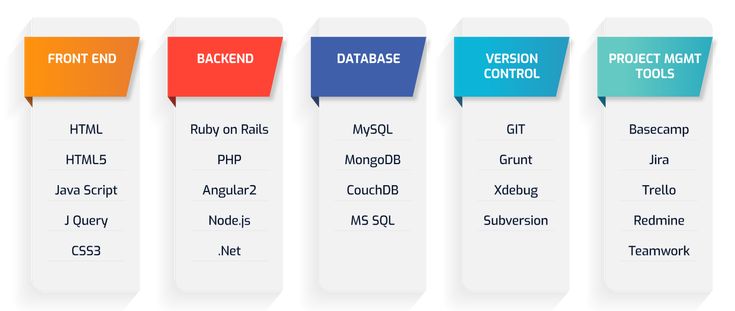Transitioning From Frontend To Fullstack Development

Fullstack development has emerged as a sought-after and rewarding career path in the technology industry. Fullstack developers possess a comprehensive understanding of both frontend and backend technologies, enabling them to work on the entire software development lifecycle. For frontend developers, transitioning to fullstack development can unlock new opportunities and career growth.

The transition from frontend to fullstack development requires a structured approach and foundational knowledge. Here are some steps to consider:

-
Build a Strong Backend Foundation: Familiarize yourself with backend programming languages, such as Java, Python, or JavaScript. Gain an understanding of database management systems, server-side architectures, and cloud computing.
-
Master Backend Frameworks: Explore popular backend frameworks like Spring Boot, Express.js, and Django. These frameworks provide pre-built components and tools that simplify development by handling common tasks like database connectivity and routing.
-
Learn Web APIs and Microservices: Web APIs and microservices are crucial for building scalable and robust web applications. Study how to design, implement, and test APIs and leverage microservices to modularize code and improve application performance.
-
Develop Fullstack Projects: The best way to solidify your skills is through hands-on experience. Build fullstack projects that incorporate frontend, backend, and database integration. This will help you apply your knowledge and gain a comprehensive understanding of the entire development cycle.
-
Network and Collaborate: Connect with experienced fullstack developers and participate in online forums. Share your projects, ask questions, and collaborate on open-source initiatives. Networking can provide valuable insights and accelerate your learning journey.
-
Continuous Learning and Improvement: The technology landscape is constantly evolving. Keep up with industry trends by reading technical blogs, attending conferences, and pursuing online courses. Continuous learning will ensure you stay up-to-date with the latest advancements and best practices in fullstack development.
Remember that transitioning to fullstack development is a gradual process that requires dedication and perseverance. By following these steps, frontend developers can expand their skillset and embrace the exciting opportunities of fullstack development.## Transitioning From Frontend To Fullstack Development
Executive Summary
The transition from frontend to fullstack development requires a significant mindset shift and technical skills acquisition. However, with careful planning and dedication, this career move can be highly rewarding. By embracing a holistic approach, leveraging resources, and maintaining a growth mindset, aspiring fullstack developers can confidently navigate this transition and unlock new horizons in their professional journey.
Introduction
In the dynamic landscape of web development, fullstack engineers are increasingly sought after for their ability to handle both frontend and backend aspects of software development. While frontend development focuses on the user-facing aspects of a website or application, fullstack development encompasses the entire development process, from frontend design to backend data management and server-side programming. transitioning from frontend to fullstack development requires a broad set of skills and a deep understanding of software engineering principles.
Subtopic 1: Mastering Backend Fundamentals
- Data Structures and Algorithms: Understanding fundamental data structures and algorithms is crucial for efficient data manipulation and storage.
- Database Management: Proficiency in relational and NoSQL databases is essential for storing and querying data effectively.
- Server-Side Programming: Expertise in server-side languages such as Node.js, Java, or Python is core to handling server-side logic and data processing.
- RESTful APIs: Understanding RESTful principles and implementing APIs for data exchange is key to building scalable and efficient web applications.
Subtopic 2: Understanding Web Architecture
- MVC Architecture: Familiarity with Model-View-Controller (MVC) architecture enables clean code organization and separation of concerns.
- HTTP and Networking: Deepening knowledge in Hypertext Transfer Protocol (HTTP) and networking concepts is essential for web application communication.
- Deployment and Scaling: Understanding deployment strategies and scaling techniques helps in managing application availability and performance.
Subtopic 3: Enhancing Frontend Skills
- Advanced HTML, CSS, and JavaScript: Refining existing skills in HTML, CSS, and JavaScript allows for more complex and dynamic frontend designs.
- Frontend Frameworks: Utilizing frontend frameworks such as React, Angular, or Vue.js enhances code reusability, efficiency, and development speed.
- UI/UX Design Principles: Developing a strong understanding of UI/UX design principles ensures user-centered, intuitive, and visually appealing interfaces.
Subtopic 4: Bridging the Frontend-Backend Divide
- Cross-Platform Development: Learning frameworks like React Native or Ionic facilitates code sharing across mobile and web platforms.
- Data Synchronization: Understanding data synchronization techniques, such as RESTful APIs or web sockets, is key to maintaining consistency between frontend and backend.
- State Management: Implementing state management tools like Redux or MobX helps handle complex frontend application state effectively.
Subtopic 5: Continuous Improvement and Growth
- Education and Resources: Continuously investing in education and utilizing resources such as online courses, workshops, and books is vital for skill development.
- Stay Up-to-Date with Technologies: Keeping abreast of emerging technologies, tools, and industry best practices ensures relevancy and competitiveness.
- Collaborative Projects: Involvement in collaborative projects provides valuable hands-on experience and exposes aspiring fullstack developers to real-world challenges.
Conclusion
Transitioning from frontend to fullstack development is a challenging yet rewarding endeavor. By embracing a holistic approach, leveraging resources, and maintaining a growth mindset, aspiring fullstack developers can equip themselves with the necessary skills and knowledge. This transition enables them to expand their impact, contribute to more complex projects, and unlock new horizons in their professional journey.
Keyword Phrase Tags
- Frontend to Fullstack Transition
- Fullstack Developer Skills
- Backend Fundamentals
- Bridging Frontend-Backend Divide
- Continuous Improvement for Fullstack Developers

Great article thankx for the information, easy to reed and understandable
What use i$ thi$ rubbish? This doesn’t help me at al
This articel was enlightning, i learnt a lot of new thing
This articel have some interesting points, but could used some more examples maybe?
I didn’t find this article very useful to be honest
This article is fantastik, i love it
Isn’t this article a bit to long, no?
nice article, but you should maybe structure it a bit better
OMG this article is so cool, i love the part about the cat